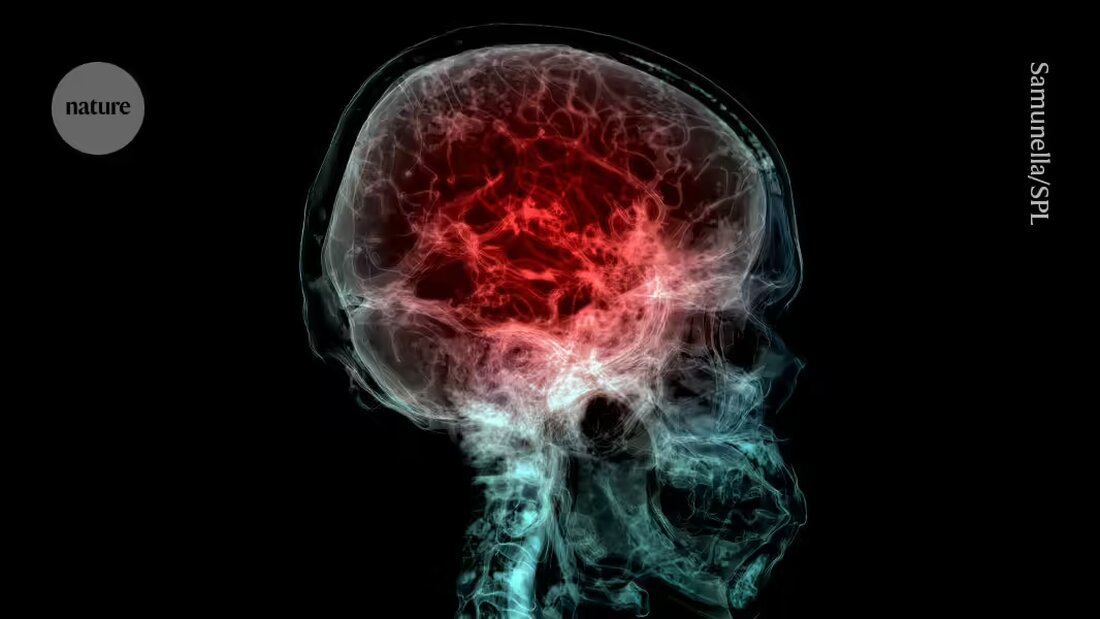In the more than six million years since humans and chimpanzees diverged from their common ancestor, human brains have rapidly accumulated tissue that aids in decision-making and self-control. But these same regions are also most vulnerable to decline with age, a study suggests 1found that compared images of chimpanzee brains with scans of human brains.
Previous studies have shown that regions of the human brain that mature last, such as parts of the frontal lobe, are the first to show signs of aging 2, a theory known as 'last in, first out'. The latest study shows that some of these regions that mature later and are most vulnerable to aging are also the most recently evolved in humans.
The results tend to support the “important hypothesis that our cortical expansion has paid its price in age-related decline,” says Rogier Mars, a neuroscientist at the University of Oxford, UK. The results were announced on August 28thScience Advancespublished.
Mind cards
Researchers created data-driven maps of human and chimpanzees (Pan troglodytes) brains using non-invasive magnetic resonance imaging (MRI) scans. They analyzed scans from 189 chimpanzees aged 9 to 50 and 480 humans aged 20 to 74.
Overall, they found that the two species' brains were generally symmetrical across both hemispheres and had many similar clusters of anatomical structures, particularly in areas of the prefrontal cortex. This region is involved in complex cognitive functions, such as language, working memory, time perception and decision-making, says study co-author Felix Hoffstaedter, a big data neuroscientist at Forschungszentrum Jülich who is based in Bonn, Germany. Damage in this region is linked to Alzheimer's and various forms of dementia, he says.
The researchers then measured how much gray matter in the brain shrank over time - a sign of aging - up to age 50 in chimpanzees and up to the corresponding age of 58 in humans. In humans, they found the largest declines in the frontal cortex, including the prefrontal cortex, while chimpanzees experienced the largest declines in a central structure involved in habit formation and reward-related behaviors, the striatum. Regions of the brain related to visual processing and motor skills were less vulnerable to aging in both species.
Rapid growth
Finally, the researchers assessed which regions of the human brain were most expanded compared to chimpanzee brains and compared scans of human and chimpanzee brains of equivalent age and gender. The fastest evolutionary growth had occurred in areas of the prefrontal cortex - one of the regions most vulnerable to aging. A structure hidden deep in the brain involved in processing emotions and physical signals, called the insula, also showed rapid evolutionary growth and increased risk from aging.
“Evolutionarily speaking, the most recent, greatest changes,” says Hoffstaedter, “are where aging occurs most strongly.”
The researchers also compared chimpanzees to olive baboons (Papio anubis) and rhesus macaques (Macaca mulatta). Here they found no such connection between the regions of the brain that experienced rapid evolutionary expansion and those that underwent accelerated aging, suggesting that this property may be unique to the evolution of the human brain.
Mars says it would be interesting to look at age-related changes beyond gray matter decline, including changes in connections between brain regions and gene expressions.

 Suche
Suche
 Mein Konto
Mein Konto

